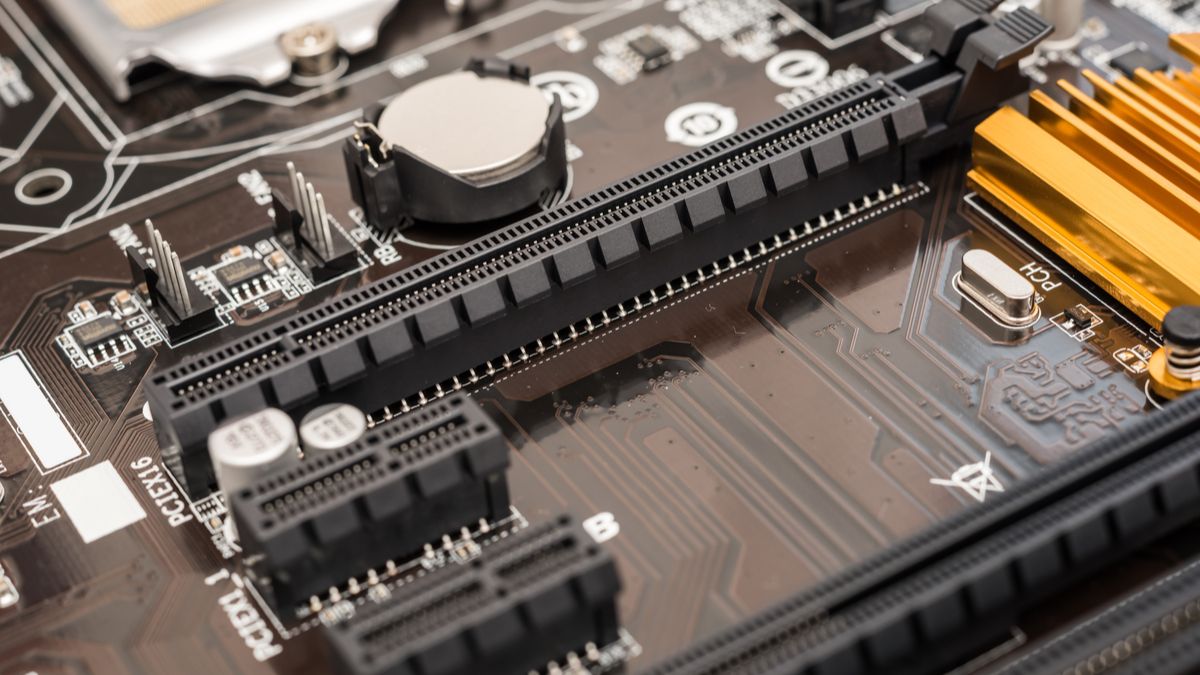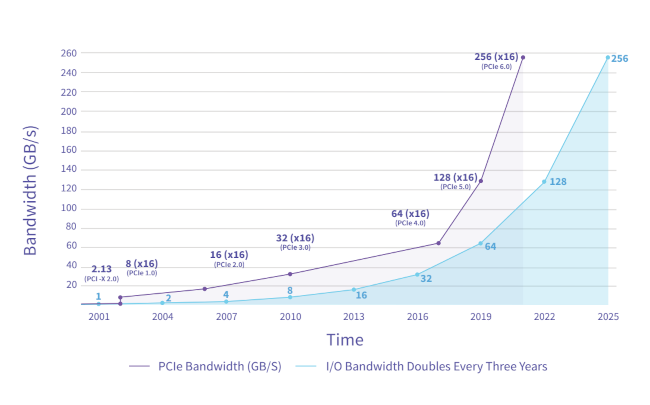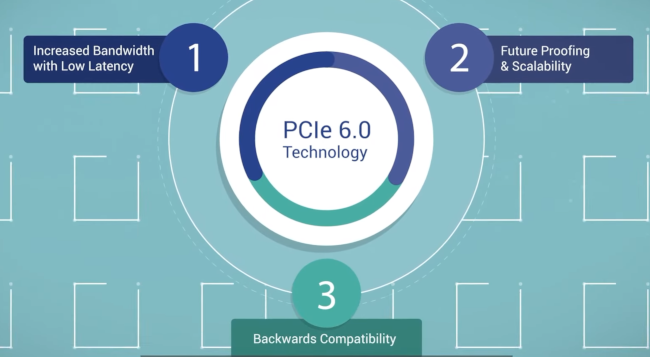Sometimes the technology industry moves too fast. We've only started kicking into gear with PCIe 4.0 in consumer products, PCIe 5.0 is just barely rolling out, and already PCIe 6.0 is on its way. Here's what you can expect.
In early January 2022, the PCI Special Interest Group (PCI-SIG) published the final specifications for PCIe 6.0, the latest version of the standard for the popular interface standard that connects items like graphics cards, SSDs, and network cards to your PC.
As we've seen with past transitions, PCIe 6.0 promises faster data speeds and backwards compatibility with that beloved old sound card of yours. We couldn't have the speedy computers we do without PCIe, but a glut of standards may make the next few years a little messy.
What Is PCIe?
PCIe stands for the Peripheral Component Interconnect Express (PCIe) standard. It's the primary way that expansion cards such as sound cards, graphics cards, and networking cards connect to your PC. It's also used for those tiny and speedy NVMe M.2 SSDs, but the M.2 drives use a special slot that expansion cards don't.
If you've ever built a PC or looked at a motherboard in recent years then you've seen a PCIe slot. The edge connectors come in four primary flavors: x16, x8, x4, and x1. Most of the time you can tell them apart as the x16 slots are the big ones, and then the others are progressively smaller. That's not always the case, however, as sometimes an x16 slot actually supports just x8.
The "x" numbers indicate the amount of data transfer lanes connected to a given slot on a motherboard. The higher the number of transfer lanes, the greater the potential bandwidth for that slot. In general, you want a graphics card connected to the x16 slot, while other cards can typically use whatever is available based on the configuration of PCIe slots on your motherboard.
PCIe also has the advantage of being backwards compatible with all previous iterations of the standard. A card designed for PCIe 2.0, for example, will still work in a PCIe 6.0 slot provided you can get the right software drivers to operate the device.
What's New in PCIe 6.0?
PCIe standards are set by the PCI Special Interest Group, an industry group that sets the specifications for PCIe. The goal of the PCI-SIG has been to roll out a new PCIe standard every two or three years, effectively doubling the bandwidth of the previous versions. As expected, PCIe 6.0 does just that.
PCIe 6.0 x16 slots have a maximum bi-directional bandwidth capability of 256 gigabytes per second (GB/s), compared to 128GB/s with PCIe 5.0. To understand what this means, imagine if you had a graphics card in a PCIe 6.0 slot. That bi-directional bandwidth number indicates the total amount of data the card could send to the CPU and that the CPU could send back to the card. In the case of PCIe 6.0 this means 128GB/s each way for a total of 256GB/s.
Now let's compare that to PCIe 3.0, which was the standard for years and is still largely used at home unless you've built or bought a new PC since 2019 or 2020 (and paid a premium for it).
PCIe 3.0 maxes out at 32GB/s cumulative on an x16 slot. So PCIe 6.0 has eight times greater bandwidth than a predecessor that is still being widely used. That's an insane upgrade, but current games wouldn't come close to saturating that much bandwidth. The most noticeable improvement we're likely to see in the early days is with NVMe SSD speeds just as we saw with the transition to PCIe 4.0--SSDs typically use 4 PCIe lanes. But when, exactly, will you get to experience this speedier standard at home?
When Will We See PCIe 6.0?
The PCI-SIG estimates that we won't see PCIe 6.0 gear hit the market until 12 to 18 months from the publication of the new standard. PCIe 6.0 was announced on January 11, 2022, so at the earliest, we're looking at PCIe 6.0 products rolling out at the end of 2022 or early 2023.
That's the best case scenario. More likely we're looking at mid- to late-2023 for early examples of PCIe 6.0, which in all likelihood won't be aimed at consumers.
All that bandwidth promised by PCIe 6.0 is really needed in areas that rely on machine learning and artificial intelligence. This includes the auto and aerospace industries, data centers, and so on. That's where the PCI-SIG expects to see PCIe 6.0 arrive first after hardware makers figure out how to turn the specification into actual products.
As for the consumer market, this could take a while as it's up to the CPU makers (AMD and Intel) and their manufacturing partners to figure out when to release gear supporting PCIe 6.0. Right now, we're just barely into the PCIe 4.0 era for home PCs. AMD released the first PCIe 4.0-supporting CPUs for consumers in mid-2019, and Intel didn't do it until early 2021. On the graphics card side, AMD released its first PCIe 4.0 GPUs around the same time as its CPUs, while NVIDIA followed suit in 2020.
Then in late 2021 Intel released its "Alder Lake" desktop processors that support PCIe 5.0 for select slots and PCIe 4.0 for others, while AMD's announced that its Zen 4 CPUs slated for release sometime in 2022 will also support PCIe 5.0. On the laptop side, neither AMD nor Intel have released CPUs that support PCIe 5.0 at this writing.
So what happens next? Who knows? When the PCIe 4.0 transition started, graphics cards--the most resource-intensive PCIe devices on consumer PCs--weren't even saturating the maximum bandwidth of PCIe 3.0. How soon gamers or video editors will need PCIe 6.0 is unclear. Even so, as AnandTech points out, a transition to PCIe 6.0 could mean lower prices. Since PCIe 6.0 graphics cards aren't likely to require those bigger x16 connections that might translate into lower hardware costs for PC shoppers while maintaining the maximum bandwidth of current graphics cards.
Given the advantages, we'd hope to see a transition to PCIe 6.0 happen fairly quickly assuming the technical hurdles don't cause serious delays. With PCIe 4.0 and 5.0 already crowding each other, it makes more sense to skip this mess and get to PCIe 6.0 as soon as possible.
Whether that's what Intel, AMD, and computer makers have planned is anybody's guess. But don't let the looming PCIe 6.0 transition stand in your way of getting a new PC or laptop. If you need a new computer it's best not to worry about waiting for some potential latest and greatest at an unspecified date.




